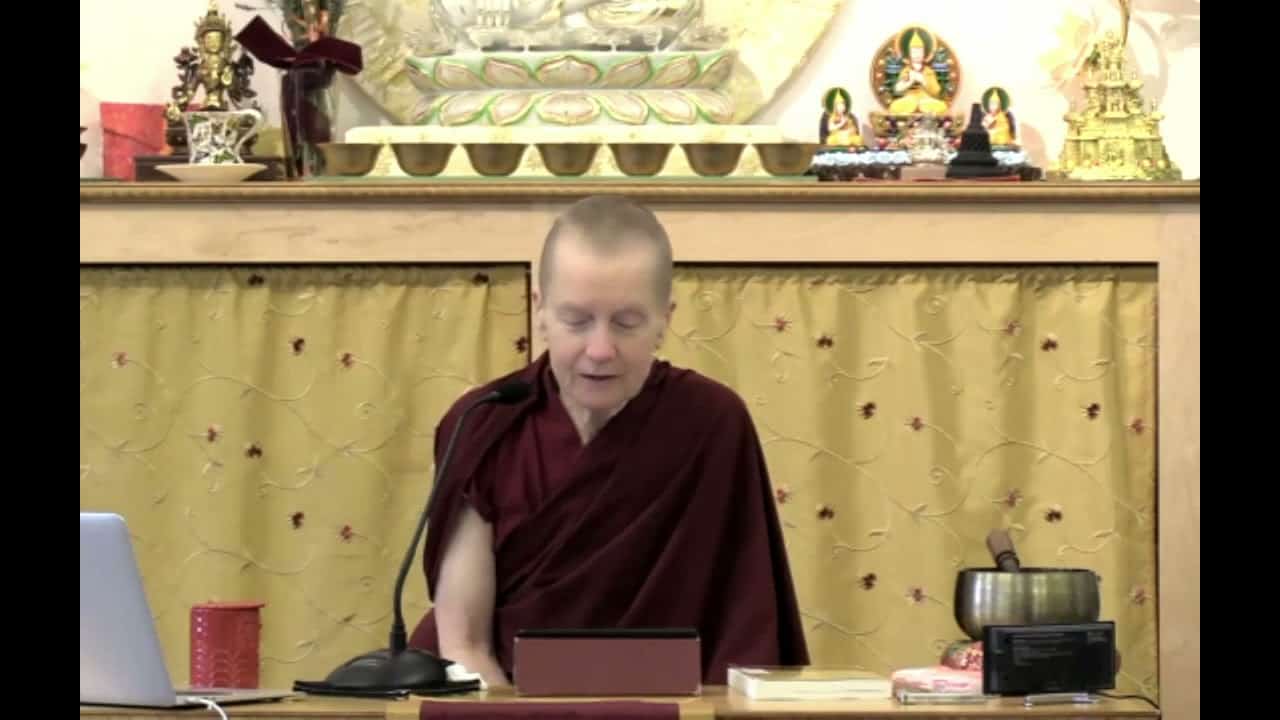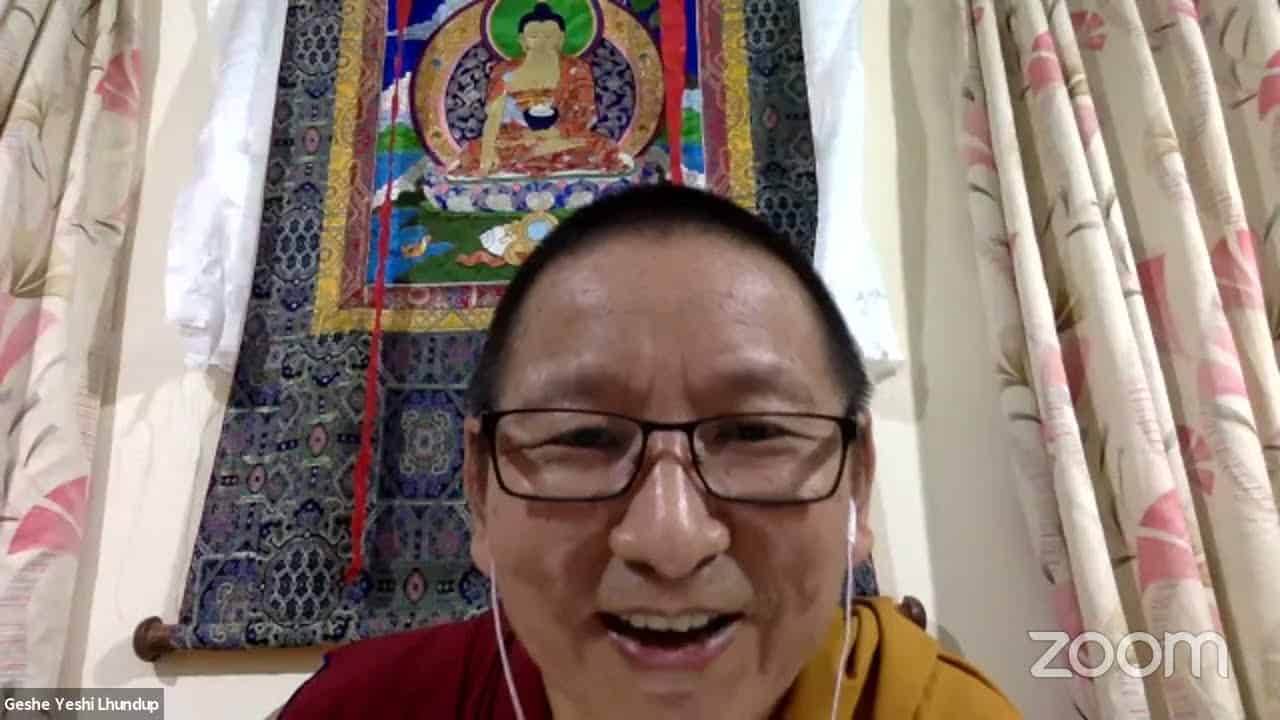Mind and the external world
39 Samsara, Nirvana, and Buddha Nature
Part of an ongoing series of teachings (retreat and Friday) based on the book Samsara, Nirvana, and Buddha Nature, the third volume in The Library of Wisdom and Compassion series by His Holiness the Dalai Lama and Venerable Thubten Chodron.
- Explanation of evolution of the universe
- Without a cause or random cause
- From a single cause such as a creator or a substance or an event
- Logical flaws for different considerations
- Interplay between laws of nature and law of karma and its effects
- Five specific types of causality
- Inorganic, biological, psychological, karmic, natural phenomenal
- Different stages of evolution of world systems
- Causes and conditions for occasional, gradual arising
- Views of various schools for the relationship between mind and external world
Samsara, Nirvana, and Buddha Nature 39: Mind and the External World (download)
Contemplation points
- What are some of the beliefs about the origins of the universe? Have you held any of them? Spend some time thinking about these and use logic to examine them.
- Consider the complexity of a simple flower coming into existence. What causes the flowers to arise and cease? Why does the flower change?
- Causality refers to the impermanence that permeates our life and how that impermanence relates to emptiness. Make some personal examples to reflect on the following quote from the text: “When that exists, this comes to be. From the arising of that, this arises. When that does not exist, this does not come to be. When that ceases, this ceases.”
- Venerable Chodron said that we are full of contradictions: neither believing in God nor needing to explain everything. We think we are reasonable and rational, but are resistant to causality. Why do you think this is so? Make some personal examples of this.
Venerable Thubten Chodron
Venerable Chodron emphasizes the practical application of Buddha’s teachings in our daily lives and is especially skilled at explaining them in ways easily understood and practiced by Westerners. She is well known for her warm, humorous, and lucid teachings. She was ordained as a Buddhist nun in 1977 by Kyabje Ling Rinpoche in Dharamsala, India, and in 1986 she received bhikshuni (full) ordination in Taiwan. Read her full bio.


